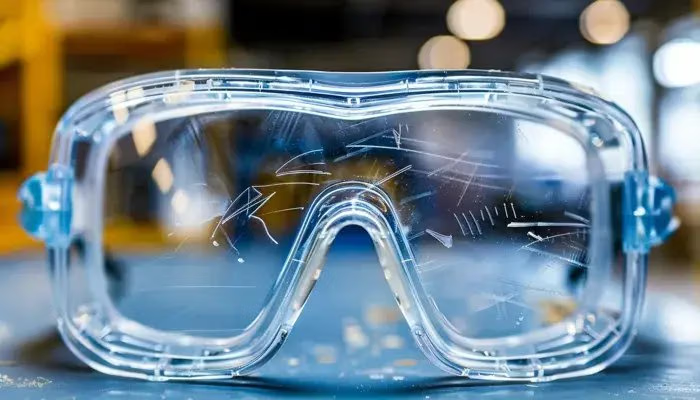Summary: Safety walks are structured inspections where supervisors and team leaders walk through work areas to identify potential hazards and ensure compliance with safety standards. These proactive measures help minimize the risk of workplace accidents, create a culture of safety, and improve overall operational efficiency. Workplace accidents remain a serious concern, particularly in industrial and production environments, where hazards such as falls, equipment malfunctions, and ergonomic-related injuries frequently occur. This underscores the necessity of implementing regular safety inspections like safety walks.
What is a Safety Walk?
A Safety Walk is a proactive method of identifying and resolving workplace hazards. This involves regular inspections of all areas, ensuring that safety protocols are adhered to and potential risks, such as slippery surfaces, are mitigated. Data gathered from these inspections should be used to improve safety management practices.
The Importance of Safety Walks
A safety walk is a proactive approach to identifying and addressing potential hazards in the workplace. It involves systematically inspecting various areas and processes to ensure compliance with safety regulations and guidelines. These are conducted by safety professionals or designated individuals within an organization who have a strong understanding of workplace safety. Safety walks play a vital role in maintaining a safe working environment. According to a report from the International Labour Organization (ILO), approximately 2.3 million people die annually due to work-related accidents or diseases, with many incidents occurring in industrial and production environments.¹ Common workplace accidents involve falls, equipment malfunctions, and ergonomic-related injuries, all of which highlight the critical role of safety walks in preventing such incidents.¹ By regularly conducting safety walks, organizations demonstrate their commitment to safety and prioritize the well-being of their employees. These inspections help identify and mitigate potential hazards, reducing the risk of accidents, injuries, and costly workplace incidents.
¹ International Labour Organization. “Safety and Health at Work.” ILO, 2023.
How effectively do your safety walks improve workplace safety?
Streamline your Safety Walks with EHS software
How to conduct a Safety Walk
To carry out a successful safety walk, it’s essential to use a structured approach, following a checklist and engaging employees. A well-defined plan should include identifying areas for inspection, scheduling regular walks, and assigning responsibilities to designated safety personnel. Workplace injury prevention starts with a proactive approach—by systematically identifying and addressing hazards, companies can reduce risks before accidents occur. Below is a detailed checklist for conducting an effective safety walk:
1. Inspect Hazardous Areas
Examine high-risk zones like machinery rooms, storage areas, and areas with heavy equipment. Look for malfunctioning machinery, exposed wires, or spilled materials. Engage employees to gather insights about potential hazards.
2. Check Slip-Resistant Treads
Evaluate floor surfaces for wear and tear, especially in high-traffic areas. Damaged or worn-out treads can cause slips and falls. Use 3M Safety-Walk products to ensure maximum traction and safety.
3. Identify Potential Hazards
Look for loose cables, cluttered walkways, or uneven surfaces. Document these risks and plan appropriate safety measures.
4. Inspect High-Traffic Areas
Pay special attention to corridors, staircases, and entrances. These areas should be well-lit, with proper handrails and free of obstacles.
5. Ensure Adequate Signage
Verify that all safety signs and labels are clearly visible. Signs play a critical role in guiding employees to navigate safely.
6. Inspect Emergency Equipment
Ensure that fire extinguishers, first-aid kits, and emergency exits are functioning and easily accessible.
7. Address Unsafe Conditions
During the inspection, document any unsafe conditions and take immediate action, whether it’s repairing equipment, removing obstructions, or implementing necessary safety measures.
8. Engage Employees
Encourage employees to report hazards and contribute suggestions for improving safety measures. Their input can help foster a more secure environment.
9. Promote Safety Awareness
Use safety walks as an opportunity to educate employees about safety risks and the importance of safe practices.
10. Implement Corrective Actions
After the walk, review findings, prioritize risks, and assign responsibilities for corrective actions. Set timelines and track progress to ensure completion.
11. Document the Safety Walk
Proper documentation is vital for future reference. Compile a report including findings, hazards identified, corrective actions, and further recommendations. This report serves as a valuable tool for evaluating the effectiveness of safety measures and improving future processes.
Mitigating Workplace Risks
A risk assessment should accompany every safety walk. Once hazards are identified, assess the likelihood of an accident and the potential impact. This helps prioritize which risks need immediate attention and which can be managed over time. Proper risk assessments ensure that the most serious risks are addressed first, creating a safer workplace environment.
Tread Safety and Slip-Resistant Materials
Understanding Tread Safety
Tread safety refers to enhancing the grip of surfaces to prevent slips and falls, especially in workplaces exposed to moisture or spills. As part of a comprehensive PPE safety strategy, implementing tread safety measures is crucial for reducing accidents and protecting employees from workplace hazards.
Slip-Resistant Tapes and Treads
3M Safety-Walk slip-resistant tapes and treads are highly effective solutions for improving workplace traction. These durable materials offer excellent grip, even in wet or oily conditions, ensuring long-term protection against slips and falls.
Working Towards a Safer Workplace
1. Safety Awareness and Communication
Creating a culture of safety awareness is vital for maintaining a safe workplace. Regularly communicate safety messages to employees through various channels, such as safety meetings, posters, and newsletters. Encourage open dialogue and feedback regarding safety concerns and suggestions for improvement.
2. Employee Engagement in Safety
Engaging employees in safety initiatives fosters a sense of ownership and responsibility. Encourage them to actively participate in safety committees, hazard reporting, and safety training programs. Recognize and reward employees who consistently prioritize safety and contribute to creating a safe working environment.
3. Building a Safety Culture
Creating a safety culture requires ongoing communication and engagement. Regularly share safety information with employees through meetings, posters, or newsletters. Encourage feedback and suggestions, recognizing and rewarding those who contribute to workplace safety.
4. Continuous Improvement and Evaluation
Safety should always be a priority. Regularly audit safety processes and incorporate feedback from employees to continuously improve safety measures. Stay updated with the latest industry practices and adapt them as needed.
Conclusion
Regular safety walks are an essential component of workplace safety management. By following a structured approach to identify hazards, implementing corrective actions, and engaging employees in the process, organizations can ensure a safer environment. Using high-quality, slip-resistant products like 3M Safety-Walk further reduces risks and demonstrates a commitment to protecting the workforce. Prioritize safety and foster a culture of continuous improvement.
FAQ | Safety Walk
What is the purpose of a safety walk?
A safety walk aims to systematically inspect the workplace, identify potential hazards, and implement corrective actions to ensure a safe working environment.
How can safety walks improve workplace safety?
It help identify risks and hazards, promote safety awareness, engage employees in safety measures, and implement corrective actions to create a safer workplace.
Can safety walks help prevent workplace accidents?
Yes, these are an effective proactive measure to prevent workplace accidents. By identifying potential hazards and addressing them promptly, it help create a safer environment and reduce the risk of accidents.
How often should safety walks be conducted?
It should be conducted regularly, depending on the nature of the workplace and the potential risks involved. It is recommended to have a schedule for routine.
What should be included in a safety walk checklist?
A safety walk checklist should include inspection of hazardous areas, slip-resistant surfaces, potential hazards, high-traffic zones, signage, emergency equipment, and employee engagement in safety practices.
What role do safety signs play in workplace safety?
Safety signs provide crucial information and warnings to employees, guiding them to navigate the workplace safely and avoid potential hazards.
What is the role of Safety Walk tapes and treads?
Safety Walk tapes and treads provide slip-resistant surfaces, enhancing safety and reducing the risk of slips and falls in the workplace.
How can safety walks help in compliance with safety regulations?
By identifying and addressing hazards, safety walks help ensure that the workplace meets legal safety requirements, reducing the risk of violations and penalties.
What is the hazard rate in a Safety Walk?
The hazard rate refers to the likelihood of workplace incidents occurring within a given time frame. In a Safety Walk, this metric helps assess the effectiveness of safety measures by identifying risks that could lead to accidents. Regular inspections and proactive hazard mitigation can reduce the hazard rate, ensuring a safer work environment.
Image: Adobe Stock – Copyright: © Евгений Архипов – stock.adobe.com





